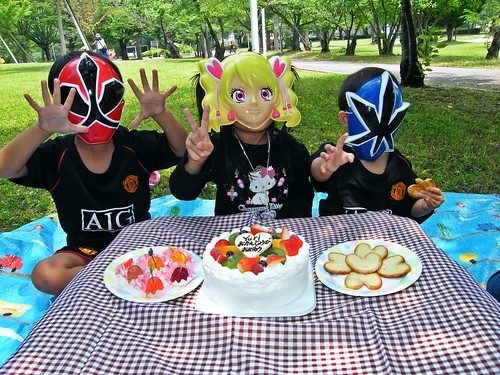 |
| Downloaded from iStockphoto.com |
Hello!
Yesterday's class was great. Thank you. I'm sorry I was so disorganised at first. It was embarrassing.
Below you can see some examples of paragraphs wriiten by SIT students about their worst experiences. I have edited the paragraphs, so the grammar is correct. Enjoy!
Daichi H's Worst Experience
When I was 11, I went to a skate park with my family. I enjoyed skating for a short time. Suddenly a child jumped in front of me. I avoided crashing, but I slipped. Unfortunately my leg broke. I suffered great pain. Fifteen minutes later, I was carried to an ambulance and everyone looked at me with interest. I was very embarrassed. This is the worst experience in my life.
Fumihisa T's Worst Experience
It was a snowy day when I was 16 years old. On my way to school, I was going to get on a train. In the train, there were many passengers. When I set foot in the train, due to the wet floor, I fell on my backside. Everybody in the train saw me. I was very ashamed and I blushed. I moved to another car. That was my worst experience.
Hiroaki K's Worst Experience
When I was twenty years old, I went fishing in the river. When I jumped down, I fell in the river. I swam to the opposite bank, and crawled up from the river. I noticed that my trousers were torn. I returned to my house. Since I was wet and my trousers were torn, I was very ashamed, until I got home.
Saki H's Worst Experience
The worst experience of my life happened this spring. On the way to school, I was in the train. I tried to sit in a priority seat, because I had a stomachache. There were a lot of people in the train. An elderly lady asked me to give up the seat. I was perplexed because I didn’t know how to answer. I was stared at by all the people around me. I felt that I was surrounded by people. I gave up the seat. I gave it to the lady.
Have fun writing about your worst experiences. See you next Saturday!





























Hello everyone!
Today we going to continue talking about companies. We will also prepare for the Midterm Exam. The Midterm Exam is on Monday the 29th of November. The exam covers units 7, 8, and 9 (pp. 62-87). The exam includes listening, reading, and writing. The study guide is below.
- Part 1: Listening - Listen to a meeting and answer comprehension questions.
- Part 2: Vocabulary - Please study our TYG Introduction to Business English Vocabulary List 2.
- Part 3: Grammar - Past simple negatives, question forms, comparatives and superlatives, present continuous
- Part 4: Skills - negotiations, discussions, dealing with problems
- Part 5: Reading and Writing - read a profile of a successful business person, answer comprehension questions and write a short description of the person.
The Midterm exam will be 30 minutes long. After that we will start the presentation project.Happy studies!